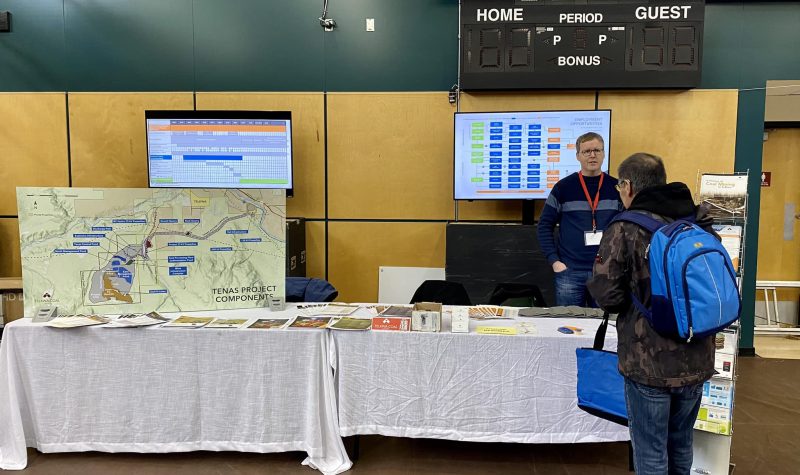Telkwa is a small village of a few hundred people along Highway 16 in northern BC. Life along the Telkwa River is peaceful, and people vacation from all over the world to fish for steelhead in the river and its estuaries, or enjoy the many hikes and nature walks available to all residents.
The Babines are a mountain range enjoyed throughout the year either on foot or on cross country skis.
Understandably, people want to protect their way of life in Telkwa. If you read the story on the grassroots organization called What Matters In Our Valley, you will know that this way of life is potentially at risk if the Environmental Assessment passes, and Allegiance Coal, the Australian Coal Mining company successfully secures the standards needed to begin mining for coal.
The project is called Telkwa Coal, and will produce approximately 775,000 to 825,000 tonnes of steelmaking coal annually, with a mine life of about 25 years including construction, operations, and reclamation phases. The location of the proposed mine site is 7 kilometres outside of Telkwa, and the mine would run 24 hours a day, 7 days a week once it reaches full capacity.
Mining coal is not a new industry in the Bulkley Valley or even Telkwa, dating back to 1901 when coal was first discovered in Telkwa at Goathorn Creek. In 1918 that the first official coal production began from the McNeil Mine. The Gething Mine was the last production in Telkwa which closed in 1986.
Manalta Coal Ltd. came on to the scene in Telkwa to assess the viability of a mine in 1997, but ultimately withdrew due to low coal prices.
Tenas (Allegiance) Coal has opened an office in the village main offices (since 2018). They are "available and accessible to the public", according to CEO Mark Gray when speaking to CICK News for an interview.
Gray commented on the economic impacts of the proposed Telkwa Coal Mine for "not only the coal mine or its employees, of which would reach approximately 163, but also for the businesses supported by the thriving economy in the Bulkley Valley".
When asked about potential risks to the environment (acid rock drainage and high selenium levels in the Telkwa River), Gray was confident that the "likelihood of hazardous levels of pollutants in the river were infinitesimal in chance" even when presented with examples of hazardous pollutants created by mines corrupting rivers in places such as the small Mount Washington mine on the Tsolum River, or the damage to the Taku River in the Tlingit first nation territory, 60 years after the mine closure.
Some residents, especially those affected by the CANFOR Mill Closure, will be thrilled with the steady work if the mine is constructed, whereas others are working to protect the natural way of life in Telkwa.
Listen to the full interview with Telkwa Coal CEO Mark Gray in the link below.


